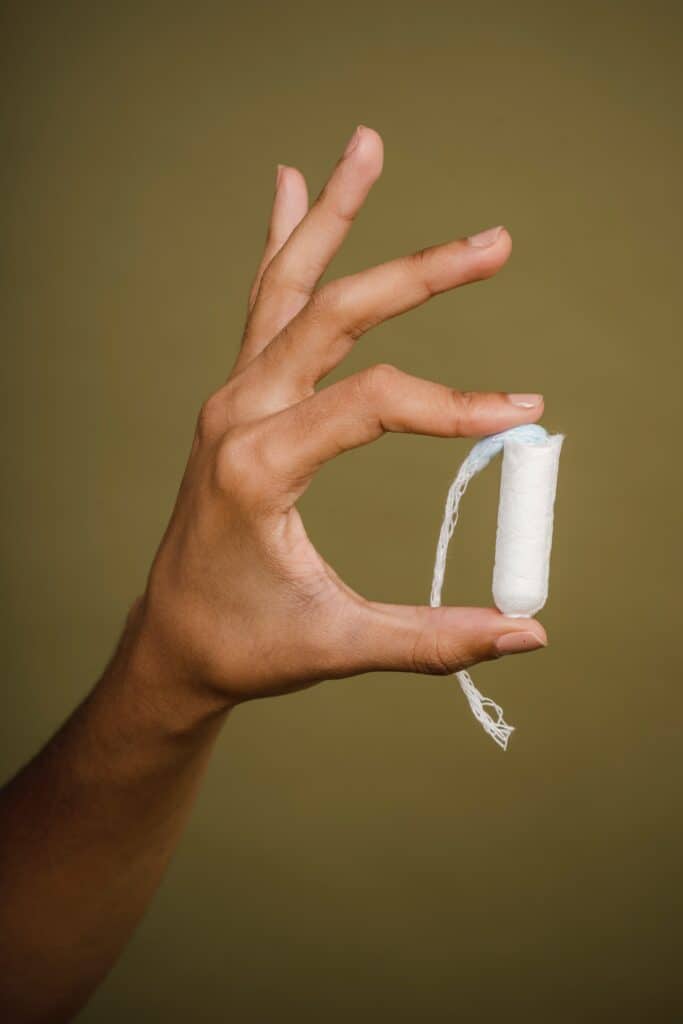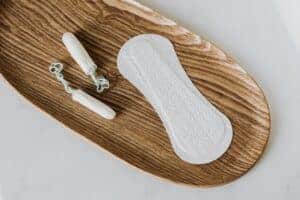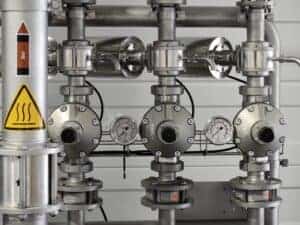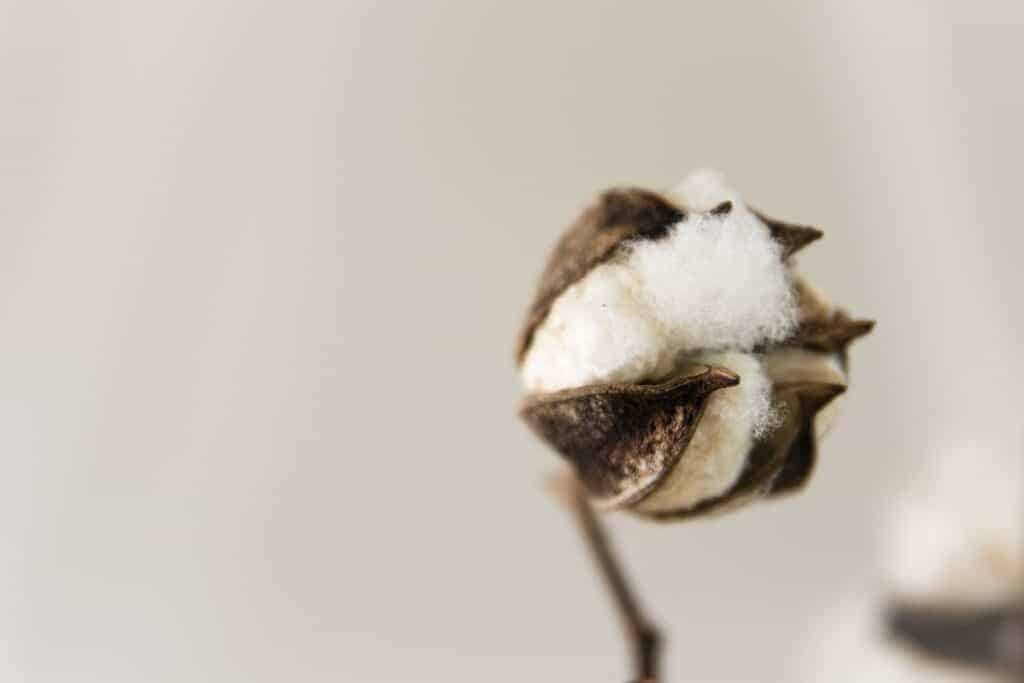For around 1800 days, over around four decades, tampons, menstrual pads and similar products are among the most important companions in a woman's life (Anand et al. 2015). Women often pay little attention to the ingredients in menstrual products. Although the ingredients in creams and cosmetics have long been discussed, the discussion on the subject of hygiene products is only just getting underway. In order to be able to choose the right products for yourself in an informed and self-determined manner, we have summarized everything that is important for you.
Important note: The contents listed here have been compiled from scientific articles. Many studies have been carried out in the laboratory under strict conditions. An assessment of the real effects on the body is often difficult to make. The amount of information can often lead to uncertainty and a feeling of powerlessness. It is therefore important to remember that the products you feel comfortable with do not have to be “perfect”.
This text has been written by specialists (e.g. medical journalists, doctors, medical students shortly before the end of their studies, doctoral students in medical fields); however, we can not guarantee the correctness or liability for the content.


First, we need to deal with a few terms. In the discussion about pollutants in everyday products, two important terms are often used: harmful to the environment and harmful to health. The Federal Environment Agency separates these.
For one, chemicals are called environmentally harmful designated. The term is not clearly defined, but includes all substances that are not degraded in the environment or that can even have negative consequences for it (Fischer-Kowalski et al. 1993). Environmentally harmful substances may therefore have no direct effect on the human body. Nevertheless, humans are of course part of the environment and effects on this also affect them.
The second important term that ingredients can be referred to is (potentially) harmful to health. This term clearly indicates that the substance can have potential effects on the human body. In technical jargon, the term mammalian toxicity or human toxicity is also used. According to the Federal Environment Agency, these are divided into 3 classes. The knowledge about the consequences of these substances often comes from laboratory experiments.
In articles on pollution, the two terms are often used synonymously. On the one hand, this makes sense because, as consumers, we naturally also have a responsibility to the environment. In addition, consequences for the environment always have consequences for people. Who, however, belongs to a certain risk group and therefore wants to avoid determined harmful substances, should read the information on the individual substances particularly carefully.
The consequences for health and the environment can be very different. Some substances can have a carcinogenic effect, others can interfere with the hormonal balance of humans. Important federal agencies, like the Federal Environment Agency or the Federal Institute for Occupational Safety and Health, as well as EU institutions, decide whether and in which category certain substances belong to.
Many tampons, sanitary towels and pads, or their ingredients, can be contaminated with harmful substances through the production process. Due to the good blood circulation in the mucous membrane, these substances can be quickly absorbed into the body. It is difficult to assess how great is the risk posed by the products, as investigations can often not be carried out in a realistic manner.
Many different groups of substances were found to be a burden in period products. The possible consequences are correspondingly different. More common symptoms are irritation and dryness of the skin. From studies it is also known that some of the substances can have an impact on fertility, autoimmune diseases and endometriosis (Woo et al. 2019). For many chemicals, the effects on the body and the environment have not yet been adequately researched.
In order to avoid potential pollution, it is worth doing research on the Internet. The results, such as those from Öko-Test, can help, but may have to be examined more closely, as not all partial results are always included in the overall evaluation. Organic cotton products have a lower pesticide load. Reusable products such as sanitary napkins are sustainable, environmentally friendly and less expensive in the long term.
There are many things to consider when buying hygiene products. Test results from Ökotest, the ToxFox app and providers with the organic seal help with the decision. Sustainable products such as sanitary towels, period underwear and menstrual cups are modern alternatives to classic period products. Period underwear and sanitary towels are also available from small suppliers, not industrially manufactured.

Like so many of our everyday products, tampons and pads are also produced industrially. Potentially dangerous substances are used for their production. There are now many studies that show exposure to a variety of substances. In order to be able to make a confident and informed decision in favor of products, it is important to know the basic terms.
Hygiene products such as tampons and sanitary towels, but also menstrual cups, have a large contact surface with our body. In particular, they come into contact with the internal and external genitalia. The genital region is covered by the mucous membrane, which can absorb pollutants particularly well due to its structure and good blood circulation. During their period, many women often use more than one hygiene product at the same time (Wendee 2014). This increases the risk of being exposed to potential pollutants.

Despite the large number of individual substances, there are different groups of substances that are particularly common.
Many disposable period products contain plastic. In tampons, for example, lies the plastic content up to 6%. Wherever there is plastic, there are usually also plasticizers. An American study found phthalate-based plasticizers in all tested hygiene products from China (Gao et al. 2020). This includes the so-called DEHP, which is harmful to reproduction. It is particularly dangerous for children and pregnant women, as the Federal Institute for Drugs and Medical Devices writes on its website. Other substances from the phthalate group have also been associated with premature onset of puberty and impaired fertility (Park et al. 2019).
The results of laboratory tests are difficult to classify. The difficulty with such investigations is that often only the individual substances are analyzed. Often, however, different plasticizers are contained in a product and the effects that they have in common are difficult to assess. In addition to phthalates, other plasticizers can also be used, such as bisphenol A, or BPA for short. Recent research shows that BPA can even have an impact on the human genome (Santangeli et al. 2017).
But plasticizers should not only be avoided by disposable products. A Danish study found traces of a phthalate in their test also in one menstrual cup . Ökotest also found questionable ingredients in its test. The silicone compound D4 was found in a menstrual cup, which accumulates in the body and can damage reproduction. There are also other silicone compounds D5 and D6, which are classified as environmentally harmful by the Federal Environment Agency.

The problem seems to have reached the manufacturers in the meantime. The manufacturers have reacted. 2007 Öko-Test found questionable ingredients in 14 of 16 products. In a more recent test from the year 2020 , only one product was criticized for organohalogen compounds. This group of substances includes many different compounds, but both the manufacturer and the testers often do not know which compound it is and potential risks such as an allergic reaction can not be 100% ruled out.
Other ingredients - just residues from production? In order to understand why some residues can be contained in the products, we should take a closer look at the manufacturing process. According to Ökotest, the above-mentioned organohalogen compounds are probably residues of optical brighteners, i.e. bleach. This ensures that the products such as sanitary towels, tampons or panty liners retain their color until they are used and are more absorbent.
The abbreviation VOC stands for volatile organic compounds. These are substances that are formed as gas or steam from other chemicals. VOCs can also be produced from natural processes, such as during plant metabolism. Non-natural VOCs can be contained in the room air through building materials.
VOCs can cause irritation, but can also be carcinogenic or mutagenic.
An American study examined various hygiene products for women, in addition to pads and tampons, also creams and powders for the genital area. They found small amounts of VOCs in almost all products, which could be traced back to packaging or production residues. The researchers found the largest amount of VOCs in sanitary towels. Unfortunately, the study also found that products labeled "organic" did not have lower concentrations than competing products (Lin et al. 2020).
Fortunately, the researchers rated the levels of VOCs as no long-term health risk, even if women use the products their entire lives. However, irritation of the skin is possible. However, the researchers point out that further measures must be taken so that the quantities of VOCs found also disappear completely (Lin et al. 2020).
Since cotton is often used for the production of sanitary towels and the like, glyphosate residues, the degradation product of which may contain aminomethylphosphonic acid (AMPA) or other pesticides, can also be contained in the products. These substances are used in the cultivation of cotton against pests. The Federal Office for Risk Assessment does not have any precise data on how high the contamination in hygiene products actually is. In particular for glyphosate, studies from 2015 and 2016 only found minimal residues, which should not have any effect on health.
But multiple articles continue to circulate on the Internet in which is cited an Argentine study that said to have found residues of glyphosate in 85% of cotton hygiene products (cotton pads, tampons, cotton swabs, etc.). This study is said to be from 2015 and there have been press reports on it since then. If you google the researcher Damian Marino behind the statement, you will quickly see: Damian Marino is actually investigating glyphosate in the environment, especially in Argentina. However, there is no study with data on glyphosate in cotton products. All press articles only relate (correctiv.org) to a statement on the sidelines of a press conference and a Facebook post.
So there is no evidence to support the claim that 85% of cotton products are contaminated with glyphosate. This is all the more annoying as the subject of glyphosate can actually pose a health problem. Trustworthy data is therefore essential. The excitement on this topic has certainly contributed to the fact that German institutes have checked products and can give the all-clear for the time being.

Although the data on health risks from glyphosate in hygiene products give the all-clear for humans, the question of what impacts the production will have on the environment remains open. Glyphosate is used as a pesticide in commercial cotton cultivation around the world. On the other hand, glyphosate should not be used in organic production and therefore no glyphosate whatsoever can be found in the products.
Since glyphosate damages almost all wild plants and insects also die, it has a massive impact on biodiversity and the ecological balance. This can also have indirect effects on humans. These thoughts can also influence the purchase of menstrual products.
A study from the USA showed that many hygiene products contain parabens (Gao et al. 2020). These have an antibacterial effect and are used as preservatives (Guo and Kannan 2013). Parabens have a disrepute for being hormonally active. Studies have not been able to clearly prove that this effect also occurs in humans . Parabens are an important ingredient in cosmetics in order to keep them bacteria-free. Often, alternative chemicals are not a better substitute, as parabens are relatively well researched. There are alternatives for sanitary towels, tampons and panty liners that do not contain parabens, such as cloth sanitary towels and menstrual cups.
Many manufacturers advertise with a pleasant smell, especially when it comes to sanitary towels and panty liners. This is usually created by synthetic chemicals. As with most other substances, the limit values are observed for products on the German market. Nevertheless, sensitive women in particular react quickly to fragrances. Sanitary towels and panty liners can lead to itching and rashes in the genital area. Should such symptoms occur, the user should change to a product that does not contain any additional fragrances.
Tampons are usually in a thin layer of plastic. Sanitary towels and panty liners are connected to plastic via an adhesive surface. The adhesive itself can also contain questionable ingredients. These packaging materials usually do not come into direct contact with the skin or mucous membrane. Nevertheless, it can not be ruled out that residues may also remain on the product itself, such as that carcinogenic formaldehyde, which was found in the plastic packaging of tampons.
Another topic that has been widely discussed in the media is the risk of bacteria that can grow on tampons in particular. This allows the comparison of the so-called Toxic Shock Syndrome. Again, studies can not clearly define which materials of the tampons promote the risk. We have written a detailed article on this which contains the most important information.

The quality of tampons, panty liners and sanitary towels is legally regulated by the Food and Feed Code (LFGB). This determines that when used correctly, there must be no health risk for users. Nevertheless, tampons and co. count as consumer goods and are not subject to any labelling requirements. Some of the questionable ingredients are also found in many other everyday products. In most of the tests, the values of the problematic substances were also below the limit values. However, since the genitals can absorb substances particularly well and therefore may be particularly exposed to periodic products, you should be aware of this as a woman. At the same time, it is not so easy for users to find out about ingredients.
Finding out which ingredients are contained in your own products is often not easy. Especially when it is only a question of production backlogs, we are often dependent on external sources of information. The ToxFox App of the BUND is useful for shopping. This means that products can still be scanned in the store. Ingredients of concern are displayed directly in the app.
Öko-Test also tests hygiene products on a regular basis. You can read detailed test results on the Internet, and manufacturers often print the grade of the overall result on the products. However, it is worth reading the detailed text, as the overall assessment often does not include the results of the included pollutant analysis.
Especially abroad, women should pay attention to the ingredients. Different quality standards apply here and hygiene products are more frequently contaminated with harmful substances. Depending on the length of the stay abroad, it is of course advisable to take the products you are used to from home in sufficient quantities.

Another tip is to make sure that organic cotton was used when buying. When organic cotton is grown, the use of pesticides is strictly regulated and there is less exposure to harmful substances. Eco products are now available in every drugstore. Not only are they less polluted, they are often also biodegradable and more environmentally friendly. However, the Hessian State Laboratory found in a test of cotton pads that commercial cotton was probably also mixed in organic products. Consumers can not uncover such offences; here we have to count on the competence of the consumer protection organisations.

Cloth pads made from organic cotton are particularly sustainable. These are reusable and washable. They do not contain any plastic and do not require any packaging. This means that the most important sources of pollution are excluded. It is important to ensure that they are cleaned correctly. People with sensitive skin should use appropriate detergents for the laundry.
Menstrual cups are also a modern and sustainable alternative. In a Danish study, silicone compounds of concern were found in only one product. Due to their growing popularity, there are now numerous companies that offer the cups. The more industrialized the production and the higher the price pressure, the higher the risk of unwanted backlogs. Products from sustainable suppliers could reduce this risk.
The age of girls on their first period has been falling since the 19th century. This trend continues today too. This means that even very young girls, whose physical development is still in full swing, use period products.
This is another reason why it is particularly important to deal well with the ingredients of the products. Although manufacturers have learned something new and improved quality standards in recent years, women should still know what to look for when buying and which warning signals they should be aware of during use.
Nowadays research results are published worldwide. This has led to a massive increase in knowledge. However, especially in research on everyday products, it is not always easy to transfer data from other countries to Germany or Europe. On the one hand, the regulations and production conditions are often different. On the other hand, women also have different cultures and methods when it comes to their periods. In Japan, for example, women use significantly more sanitary napkins per period than in the USA or Europe (Woo et al. 2019). When it comes to tampons in the American supermarket, it is noticeable that many have a plastic inserter. These differences can not always be shown in studies.

The list of problematic substances in hygiene products is long and there is hardly any one hundred percent safety. Even so, women should feel comfortable and safe during their periods, not just in terms of protection, but health risks as well. Finding the right products therefore sometimes takes some time. The courage to try out washable products, for example, can also pay off so that the 1800 or so days with periods in life do not cause any additional problem (of stress and pollutants).
Anand, E., Singh, J., and Unisa, S. (2015), 'Menstrual hygiene practices and its association with reproductive tract infections and abnormal vaginal discharge among women in India', Sex Reprod Healthc, 6 (4), 249-54.
Fischer-Kowalski, Marina, et al. (1993), 'The System of Polluter-Related Environmental Indicators', Series of publications of the IÖW, 64 (93), 1-73.
Gao, CJ, et al. (2020), 'Feminine Hygiene Products-A Neglected Source of Phthalate Exposure in Women', Environ Sci Technol, 54 (2): 930-37.
Guo, Ying and Kannan, Kurunthachalam (2013), 'A survey of phthalates and parabens in personal care products from the United States and its implications for human exposure', Environmental science & technology, 47 (24), 14442-49.
Lin, N., et al. (2020), 'Volatile organic compounds in feminine hygiene products sold in the US market: A survey of products and health risks', Environ Int, 144, 105740.
Park, CJ, et al. (2019), 'Sanitary pads and diapers contain higher phthalate contents than those in common commercial plastic products', Reprod Toxicol, 84, 114-21.
Santangeli, S., et al. (2017), 'Effects of BPA on female reproductive function: The involvement of epigenetic mechanism', Gen Comp Endocrinol, 245, 122-26.
Wendee, N. (2014), 'A question for women's health: chemicals in feminine hygiene products and personal lubricants', Environ Health Perspect, 122 (3), A70-5.
Woo, Jingang, et al. (2019), 'Systematic Review on Sanitary Pads and Female Health', The Ewha Medical Journal, 42 (3), 25-38.
You can find many Questions & Answers in our Frequently Asked Questions (FAQ).
Unsure about the right size? See our size chart!
Click one of the items below to get started.